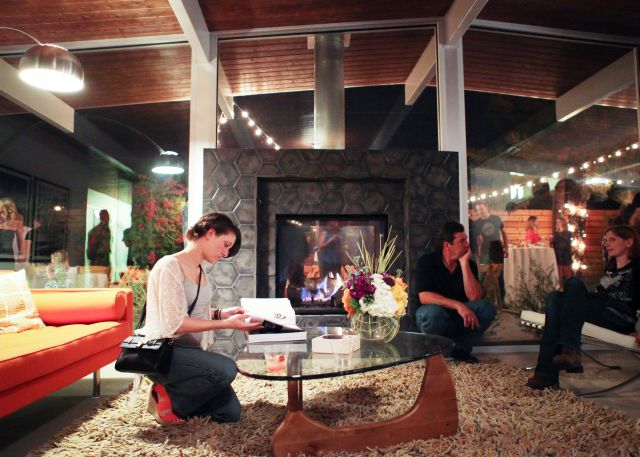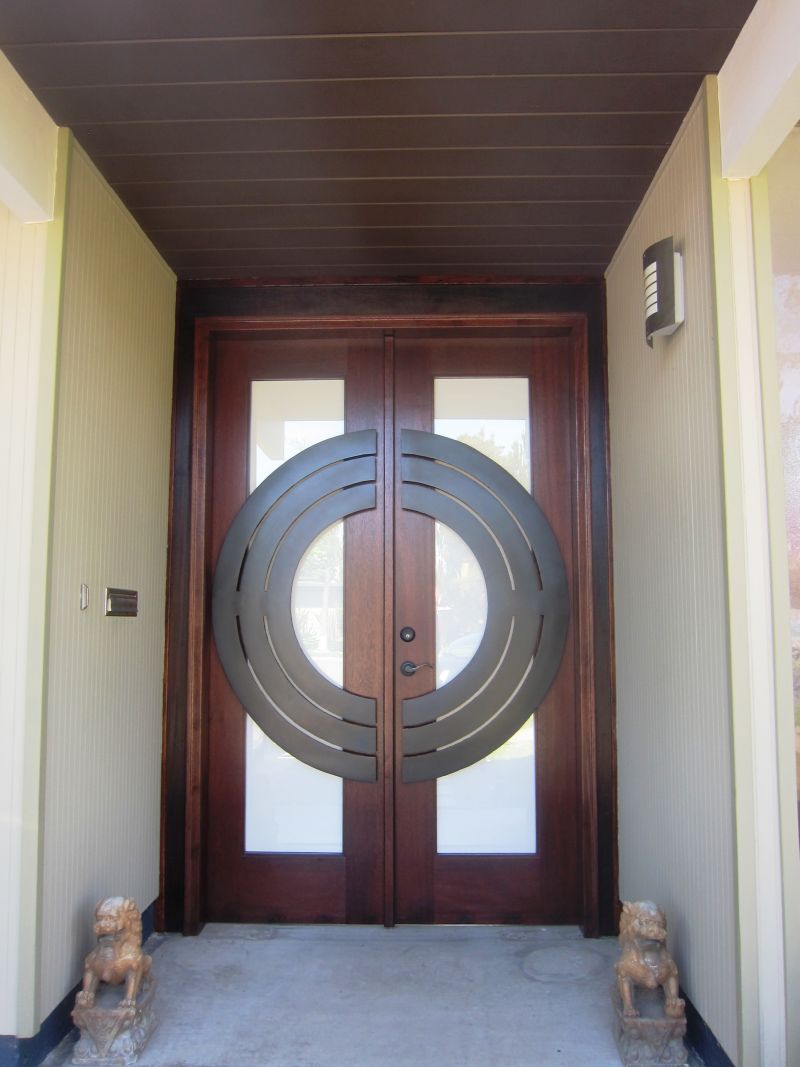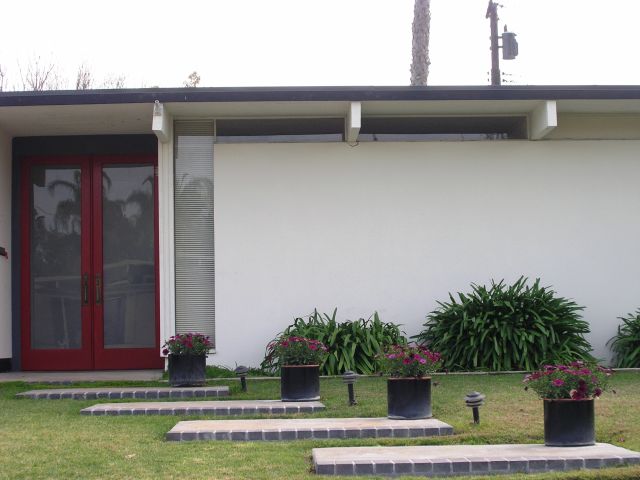
Eichlers in Orange May Be Declared Historic
 |
|
|
Separate but complementary efforts are underway in the Southern California city of Orange to preserve three neighborhoods of Eichler homes by creating historic districts.
Kelly Laule, a real estate broker and longtime champion of Eichlers and other mid-century modern homes, is leading the campaign to place the three neighborhoods, totaling about 349 homes, on the National Register of Historic Places and the California Register.
City staff, meanwhile, is preparing documents that could lead to the creation of three local historic districts, one for each neighborhood.
The three neighborhoods are Fairhaven, with about 141 homes; Fairmeadow, with about 128; and Fairhills, with about 80. The tracts were built from 1960 to 1963.
If successful, these would be the first Eichlers to get on the National Register since a pioneering effort in Northern California a decade ago.
 |
|
|
Ironically, perhaps, it is local historic designation that would confer the most protection against historically inappropriate changes to the homes. That’s because city planners, working with neighbors, would devise enforceable design guidelines.
National and state designations are mostly honorary – though they do call attention the historical importance of places, and thus make it easier for people trying to preserve them to make a good argument.
“They all do different things,” Laule says of the three levels of designation, “but they all hold the same meaning. With the national and state [designations], you’re a landmark. How neat! How many neighborhoods are landmarks?”
Although city planners and Laule are working on separate efforts, and the city is not involved in the national and state applications, they are sharing information about the neighborhoods. How many houses are intact enough to 'contribute' to a historic district is one main question. Also, how many are 'non-contributors' because of stylistically inapt changes?
“No, there are not a lot of non-contributing houses,” Laule says. “That should tell you something.”
 |
|
|
Gaining spots on the national and state registers involves sending a nomination application to the state Office of Historic Preservation, followed by a hearing before the State Historical Resources Commission. Laule hops to submit the nomination early in 2016.
Achieving local designation involves hearings before the Planning Commission and City Council, and City Council approval. But first, say Marissa Moshier and Anna Pehoushek, a series of community meetings will be held. They should start in the first quarter of 2016, says Pehoushek, assistant community development director.
The entire process could take about six months, she says.
“The wild card with the timing is the interaction with the community,” says Moshier, an associate planner dealing with historic preservation.
“A good assumption is there would be a lot of support for historic designation. But some people may not be enthusiastic about being part of a historic district and any of the controls and regulations involved with that. There could be opposition.
“We have heard from lots of people who want it to happen. We’d like to think there would be overwhelming support.”
 |
|
|
“Not everybody wants to be told what to do,” Laule notes, adding, “Some people are concerned they are going to get bullied by the city and lose their voice.”
“People want to make sure that on the local level they are included in the process.”
Design guidelines, which staff hope would be consistent for each of the three Eichler historic districts, would be developed with neighbors and could address “appropriate repairs to historic Eichler houses, location and size for additions,” Moshier says.
“If you add onto your house," Laule says, envisioning what guidelines might cover, "you’re going to add onto it in an aesthetic way. You’re not going to be able to put vinyl windows on, or do something funky or ugly on your siding. You won’t be able to create an attic for your air-conditioning, for your ducts.”
“The city will take what the owners want into consideration,” Laule says. “It’s not going to be like Old Town Orange [an existing historic district]. They have a lot more restrictions than we are going to have over here.”
Laule suggests that the historic designations would boost property values – in part because of another benefit that would come from the historic declarations – use of the state Mills Act.
This is a state law that allows cities to cut property taxes on historic properties by entering into a contract with the owner, “in exchange for doing repairs and maintenance of your historic house,” Moshier says.
In the city’s Old Town Historic District there are about 200 such contracts. The council currently authorizes up to ten new contracts per year.
 |
|
|
“The value of having [a Mills Act contract] is substantial,” says Laule, who has sold properties that have such contracts. “Substantial.”
Efforts to landmark these neighborhoods began more than a decade ago, with several people working on the plan. Laule worked with her former partner Stephanie Raffel and a group of neighbors, including Adrian Turner.
Laule eventually hired an architectural historian firm to prepare the lengthy National Register application, which also serves as the state application.
The city too has considered the matter for years, Pehoushek says, “because [the homes] have a high level of integrity and there was community interest.” When the city updated its general plan in 2010, she says, historic designation for Eichlers was one of the plan’s goals.
The city took a look at its historic resources inventory. “To that point it focused on buildings built prior to 1940, in our historic downtown and some scattered farmhouse locations,” Pehoushek says.
The Eichlers would be the first historic districts from their era, the planners say.
It is important to provide a degree of protection now, Laule says, because the three neighborhoods still are largely original in appearance.
“You go through a lot of other Eichler neighborhoods, they can be patchy,” she says. "They can be hit and miss. That is so sad.”
“Here, people love their neighborhoods. They know what they have. We have some of the nicest Eichler neighborhoods in any area.”
- ‹ previous
- 208 of 677
- next ›



